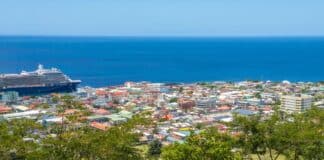Archaeologists discovered an inscription paraphrasing part of Psalm 86 at the Hyrcania Fortress, located in the Judean Desert.
The Greek inscription, used in the New Testament, was likely written by Byzantine Christian monks around the 6th century.
Grammatical errors in the text suggest the “priest was not a native Greek speaker, but likely someone from the region who was raised speaking a Semitic language,” according to Dr. Avner Ecker of Bar-Ilan University, who aided in deciphering the inscription.
The inscription reads, “Jesus Christ, guard me, for I am poor and needy. Guard my life, for I am faithful to you.”
The original psalm reads, “Hear me, Lord, and answer me.”
Dr. Oren Gutfeld and Michal Haber of the Hebrew University directed the excavation, working alongside Carson-Newman University, located in Tennessee, and American Veterans Archaeological Recovery.
The archaeologists also uncovered an upper fortification line dating to the late 2nd or 1st century BCE.
According to Gutfeld, “Certain architectural elements within these fortifications strongly recall those of Herodium, all part of Herod’s extraordinary vision. It’s quite possible that the same engineers and planners even oversaw the construction. It’s not by chance that we call Hyrcania ‘Herodium’s little sister.’”
Reporting from Greek City Times:
A few days after this initial discovery, an additional inscription was found nearby. It was also inscribed on a building stone from a collapsed wall and is currently undergoing analysis. Michal Haber emphasizes the profound significance of these findings, stating, “Few items hold such importance in the historical and archaeological record as do inscriptions—and it must be stressed that these are virtually the first examples from the site to have originated in an orderly, documented context. We are familiar with the papyrus fragments that came to light in the early 1950s, but they are all shaky, unreliable provenance. These recent discoveries are truly exceptional.”





